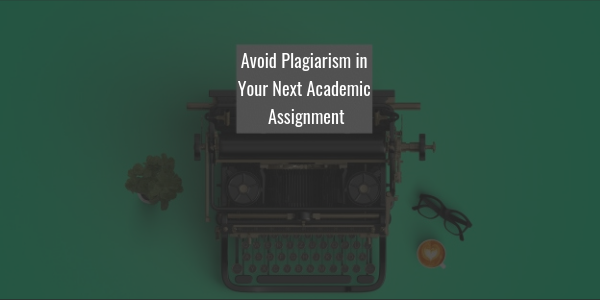

Plagiarism in academic assignments is something students dread. Plagiarism may be found in a student’s assignment who has done good research and homework too. This happens because of some mistakes that students do either voluntarily or involuntarily.
Here are eight proven steps that would definitely help you to avoid plagiarism in your next academic assignment.

This is the first major step in gathering adequate information concerning a topic. Many students refer 1 or 2 sources and think that that information would suffice. This results in a narrow scope for their understanding and leaves them with not many ideas to ponder upon.
Instead, it is always good to research an ample number of sources and then take down notes for working with your assignment. This step drastically reduces plagiarism chances in your academic assignments.
It may happen that sometimes students note down points from various sources, but then ignore to note the sources from which the content was noted down. And if at the later stages, if the student by mistake keeps the words as they are, then definitely their work is prone to plagiarism objections.
To avoid this, it is important that student notes down the sources from where the notes have been taken, which website was the origin of that tabular data which the student is going to use in the assignment, in which newspaper or magazine the quote appeared or which book, research paper or journal a specific concept has been taken from, etc.
Once you have taken down the notes, form a skeleton for the assignment – how the flow of the content needs to be. Accordingly, study and analyse each and every sentence of your notes and question your understanding levels.
This way you are looking at the concept from a broader perspective – which means you are able to grasp the subject thoroughly and thus there are least chances of plagiarism when you finally pen down your ideas.
After a thorough analysis as said above, start writing the topic in your own words. Maintain the flow, refer to the sources in case you get any doubts, and then rewrite in in your own voice.
Sometimes, it may happen that some definitions, quotes, news items, tabular data, or any other information cannot be rewritten. In worst cases, such efforts to rewrite may miss the essence of the statement or data.
In such situations, it is important to cite the reference or the origin of the information – the name of the book, the original speaker of the quote, or the newspaper in which it is published, etc. For this, you may have to adhere to citation rules as per the guidelines of your university.
In case you wish to rewrite the statement, you can use linking words and phrases such as ‘cites’, ‘opines’, ‘discusses’, and mention the source in your bibliography.
Also, remember that some universities are strict with self-plagiarism too, i.e., even if you reuse your original work, you must cite it, or else it would be considered as plagiarized content.
Once you have done with writing and rewriting and given a full and final form to your assignment, run the assignment content on an online plagiarism checker and check for the originality score.
For better accuracy, run on 4-5 plagiarism tools and compare the results, and rework on the portions that have been shown as plagiarized.